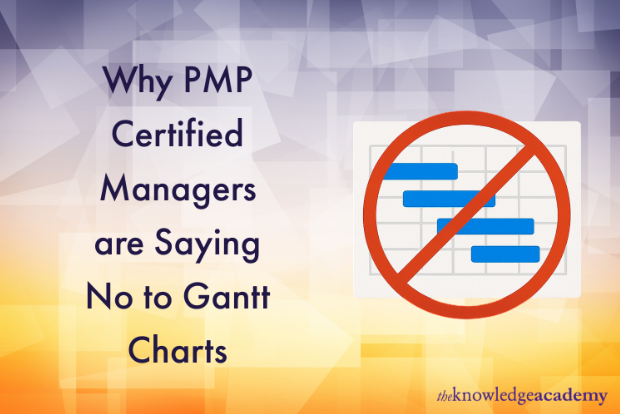Is a project plan complete if it falls apart the moment things change? Many project managers are now asking this. The trusty Gantt chart, once seen as a project planning staple, is now raising eyebrows. It’s neat, it’s structured, but does it still work for teams navigating constant change and shifting goals?
Those with a PMP Certification seem to think otherwise. They’ve been taught to think outside of standard tools and are moving towards more responsive, open, and collaborative methods. So, what is it that is making people move away from Gantt charts? Let’s explore what’s really behind this quiet rejection.
Why Gantt Charts are No Longer the Go-To for PMP Certified Managers
Today, project managers have to deal with goals that change, teams that come from different departments, and higher standards for getting things done on time. Traditional tools are no longer enough to support this reality. Here are some reasons why a lot of PMP-certified people are shifting away from Gantt charts and toward smarter, more flexible approaches to managing projects:
The Rise and Limits of Gantt Charts
When they first emerged in the early 1900s, Gantt charts revolutionised how people planned projects. They made it easy for project managers to see when tasks needed to be completed and how they fit together by organising tasks on a timeline. It remained largely unchanged for decades.
But Gantt charts have always had their problems. They believe duties are fixed and linear, and they struggle to handle change effectively. The complete chart typically needs to be changed as soon as a project changes, which usually happens. This makes things more frustrating than clear for PMP-certified managers who work on complicated, changing projects.
Agile and Adaptive Approaches are Taking Over
The growth of Agile and hybrid methods is a primary reason for this shift. Gantt charts work on the principle that you already have a complete project plan. However, Agile initiatives thrive best when they can adapt. Work doesn’t happen in a single sequence. It happens in steps.
PMP certification now includes information on adaptable approaches, and many managers are advised to adjust their approach to meet the project’s needs. As Scrum and Kanban become more popular, Gantt charts are increasingly being replaced by more visual boards and sprint backlogs. These tools are great for providing teams with quick feedback and allowing them to work independently.
Real-Time Collaboration Matters More
Modern projects require people to communicate frequently and stay informed about what’s happening. A static Gantt chart, typically created and managed by a single project manager, doesn’t meet these needs. Teams now work in different time zones and may have varying levels of responsibility and involvement.
Managers who have earned the PMP certification are moving towards solutions that let everyone share ownership and get information in real-time. Without having to look at a complicated plan controlled from the top, everyone on the team can keep track of their work, let others know how things are going, and figure out what’s stopping them. They won’t have to depend on a single person and can handle things better on their own.
Gantt Charts Don’t Reflect Complexity
A Gantt chart is designed to visually represent the project plan from start to finish. But in real life, it makes things too simple. It’s challenging to display overlapping tasks, conditional tasks, and changing dependencies on a single timeline.
Gantt charts often fail when project managers have to deal with a large number of stakeholders, unpredictable resource availability, or rules that are difficult to follow. They don’t explain things clearly, but they make it appear certain. Increasingly, PMP-certified professionals who are trained to manage risks and uncertainties are finding this to be misleading.
Conclusion
For a long time, project managers have utilised Gantt charts; however, the world of project management has undergone significant changes. Managers with the PMP certification now work in places that need them to be open, flexible, and able to work with others. If you want to learn more about project management, getting certified through The Knowledge Academy can help you learn about new methods and confidently lead projects.
